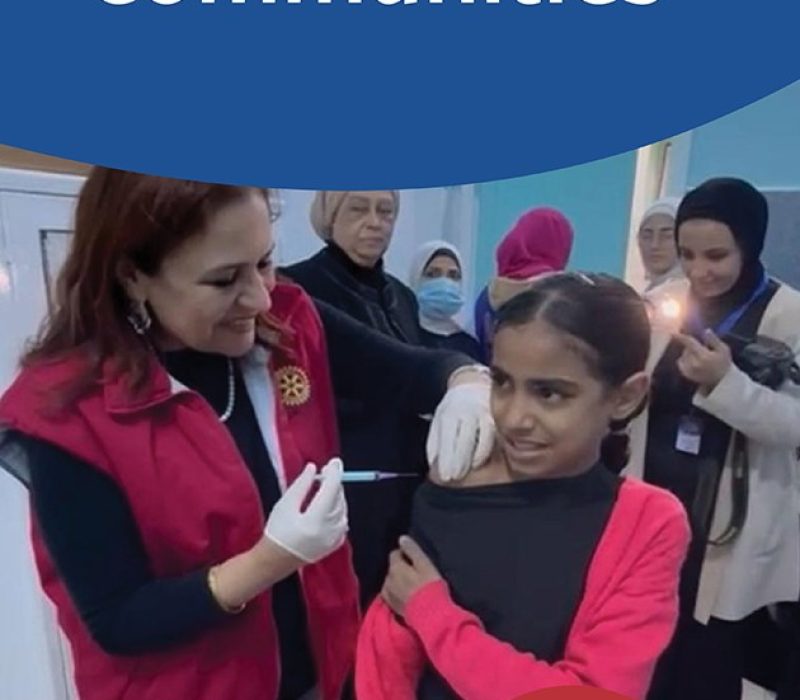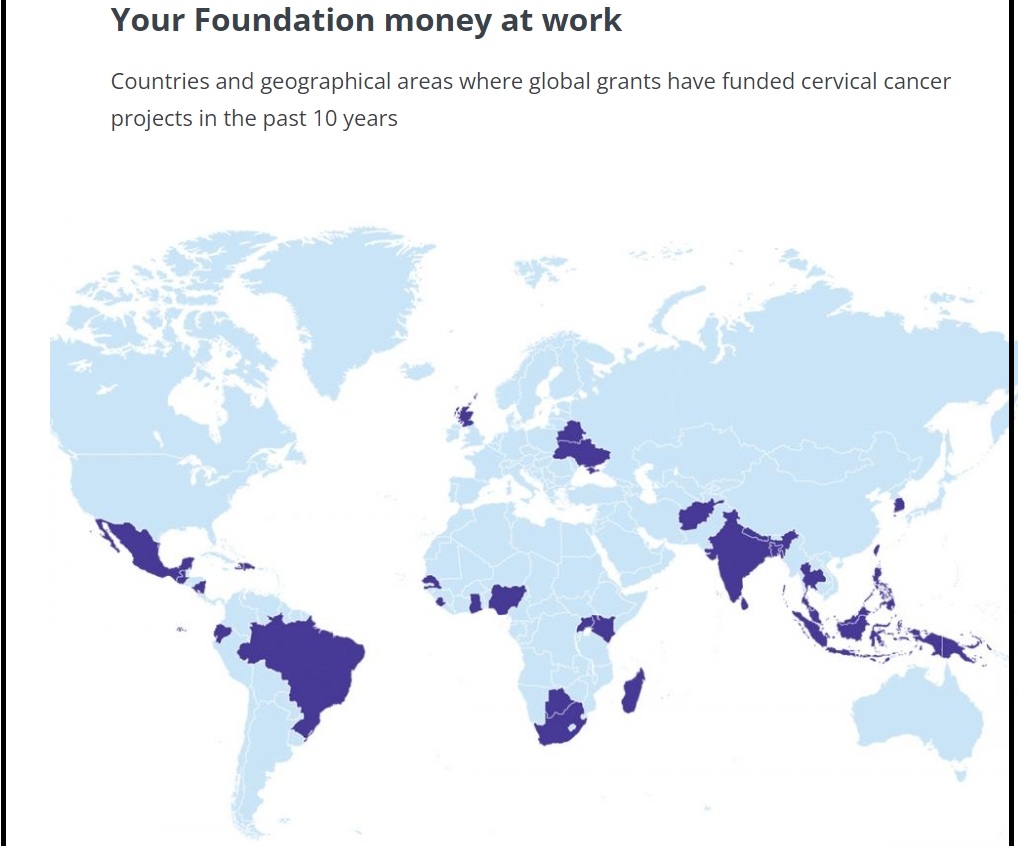Cervical Cancer - a preventable killer
Cervical cancer inequity

Few diseases reflect global inequities as much as cervical cancer. Globally, 346,000 women die from the disease each year – one every minute and a half. In 2022, nearly 94% of the deaths occurred in low- and middle-income countries. The World Health Organization (WHO) has set a goal to help all low-income countries achieve its triple-intervention targets by 2030:
fully vaccinate 90% of girls against human papillomavirus (HPV), the principal cause of cervical cancer, by age 15
screen 70% of women twice by age 45
treat 90% of the women with cervical cancer
Rotary has been engaging for over a decade in Cervical cancer elimination programmes. The Rotary Foundation has funded over 125 Global Grants worth over $11 million in over 40 countries.


Online seminar to share our experience
Cancer of the Cervix claimed 350,000 lives in 2022 though it is preventable and curable.
Why are so many people dying of cervical cancer?
Rotarians worldwide are actively engaged in eliminating Cervical Cancer.
An online seminar in January brought together world experts and a spectrum of views.
During the closing remarks Past Chair of the Fellowship and Co-Chair of the Webinar Dr John Philip said: “To us Rotarians every life matters whether it is in Bolivia or Bangladesh. Cervical cancer is a threat to life. It can be prevented. Rotary knows how to do it – and do it well.”
Some of the memorable quotes from the Webinar:
“If you look at the number of orphans that are created by maternal cancers, you can see that it’s quite a large number, and that 20% of those are from cervical cancer.”
“There’s a lot of studies that show all what happens to youth when they lose their mother, and it creates this intergenerational cycle of inequity.”
“But it is a wonderful vaccine. But 56% of individuals in the world countries population based that do not have access to this vaccine. And it’s not in the public sector yet in India and China hopefully will be soon. But these are countries with large cervical cancer burdens and very high populations. And so, we still have a lot of work to do to get to equity in access”
“We hopefully can put data and science together with advocacy and stories. And that’s how we can really move to change.”
“Rotary’s Areas of Focus are aligned with the 17 Sustainable Development Goals and most of what we do in Global Health aligns best with Sustainable Development Goal 3, Good Health and Wellbeing.”
“Local commitment with a large enough team is needed for continuity to engage in education, ongoing screening, treatment and follow up care, and most of all funding, are essential elements of a successful initiative.”
“This webinar certainly ignited the existing enthusiasm for cervical cancer elimination in the Rotary world. Thank you many times over!
